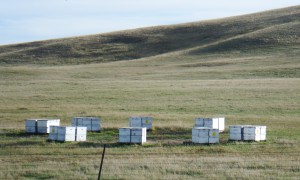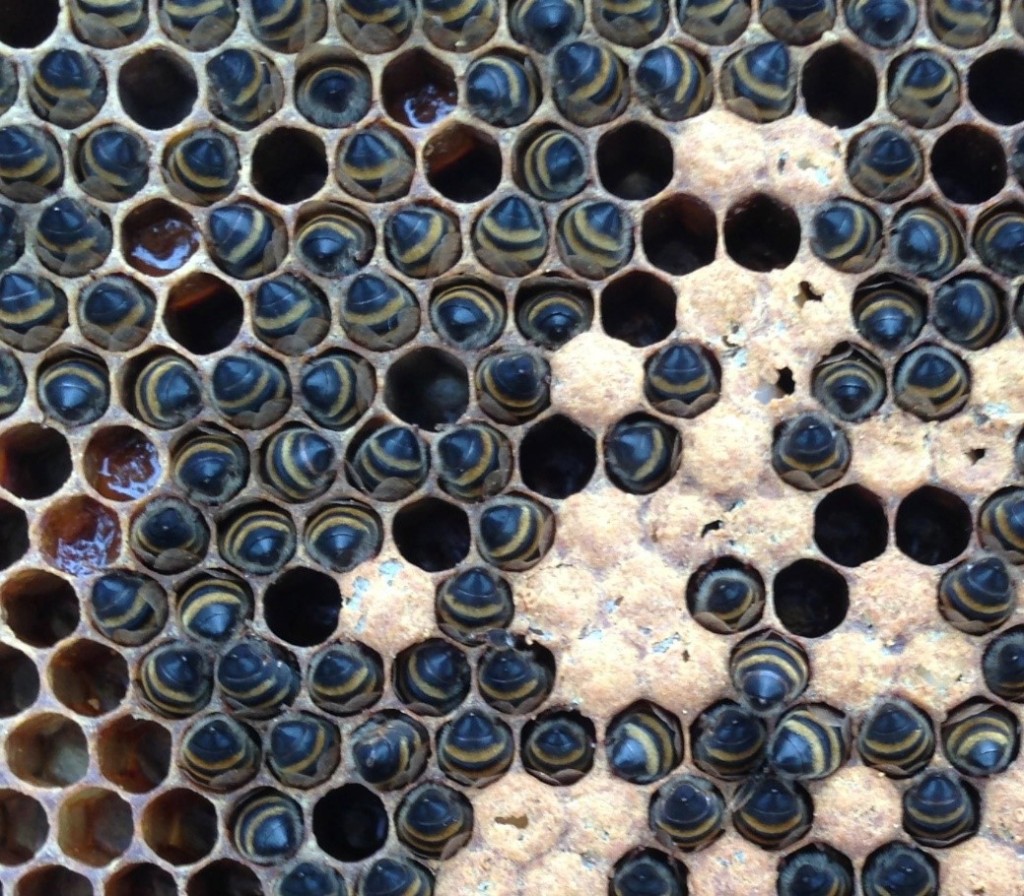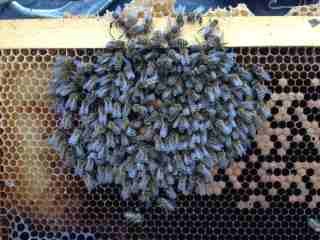It was warm enough today to take the covers, and inner covers, off my hives today, and to observe what it looks like inside my hives. I call this popping lids, the earliest spring beekeeping activity I do. Yeah, i know, it is not really spring, but it was about 50 ͦf, and bees were flying to my bee water supply. I DID NOt pull frames, this check is only to see what hives are alive, and to get an idea of colony strength. I do this by noting the size of the cluster, in the top box. Typically, this time of year, the bees have moved into the top box.
All colonies reported to be alive and well! No winter losses, so far, but they looked OK.
Sometimes we can be fooled as to whether a colony is alive or not by bees flying from the hive. I ask beekeepers: are they flying “in and out”, or “out and back in”? There is a difference. By observing the cluster, I know my girls are all flying out and back in.
I also placed a winter patty, which I had purchased from the local Dadant branch, on the top bars of the op box. This is similar to bee candy, and will give them a boost, if food stores are low.
Finally, I warn new beekeepers about opening hives and pulling frames very early in the spring. There is the danger of disturbing the cluster, and little to learn. Hold off on pulling frames until we get extended periods of above 60 ͦ F weather. It will come, I hope soon.




